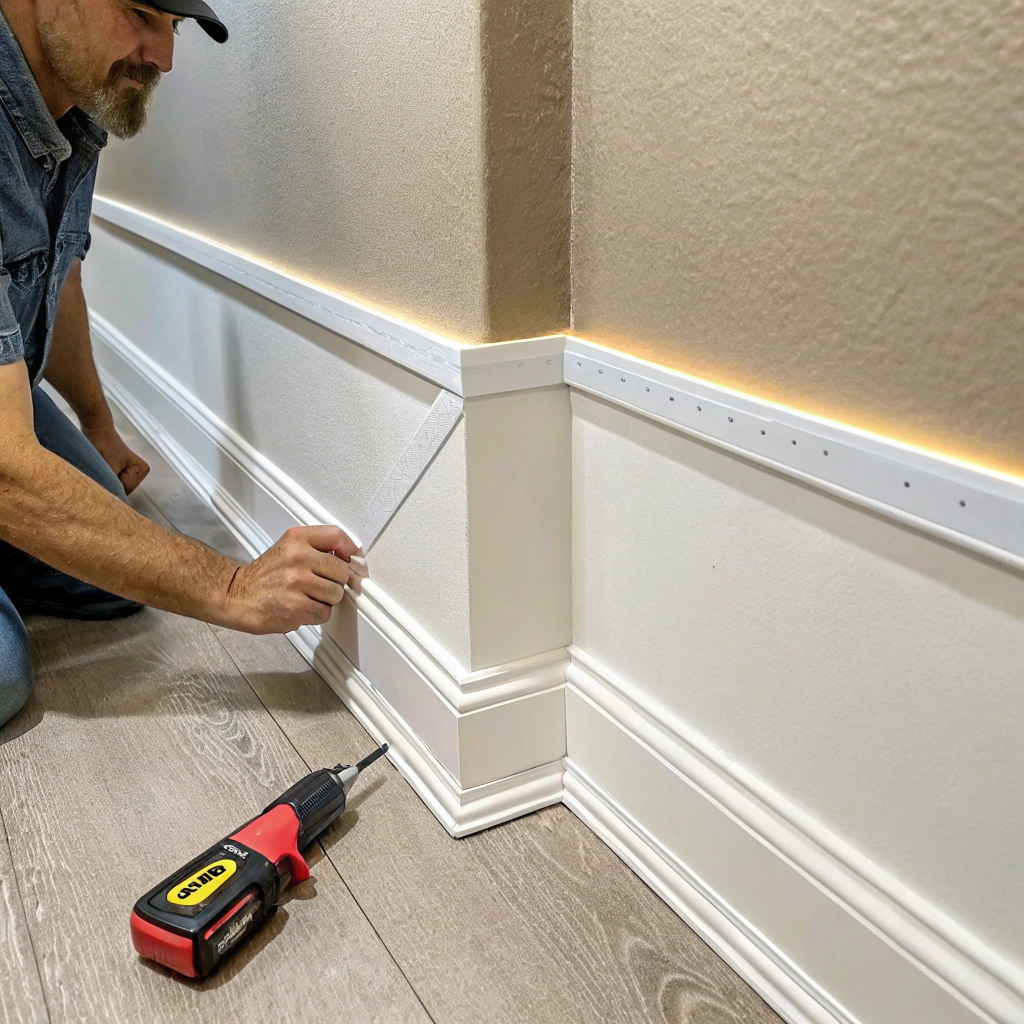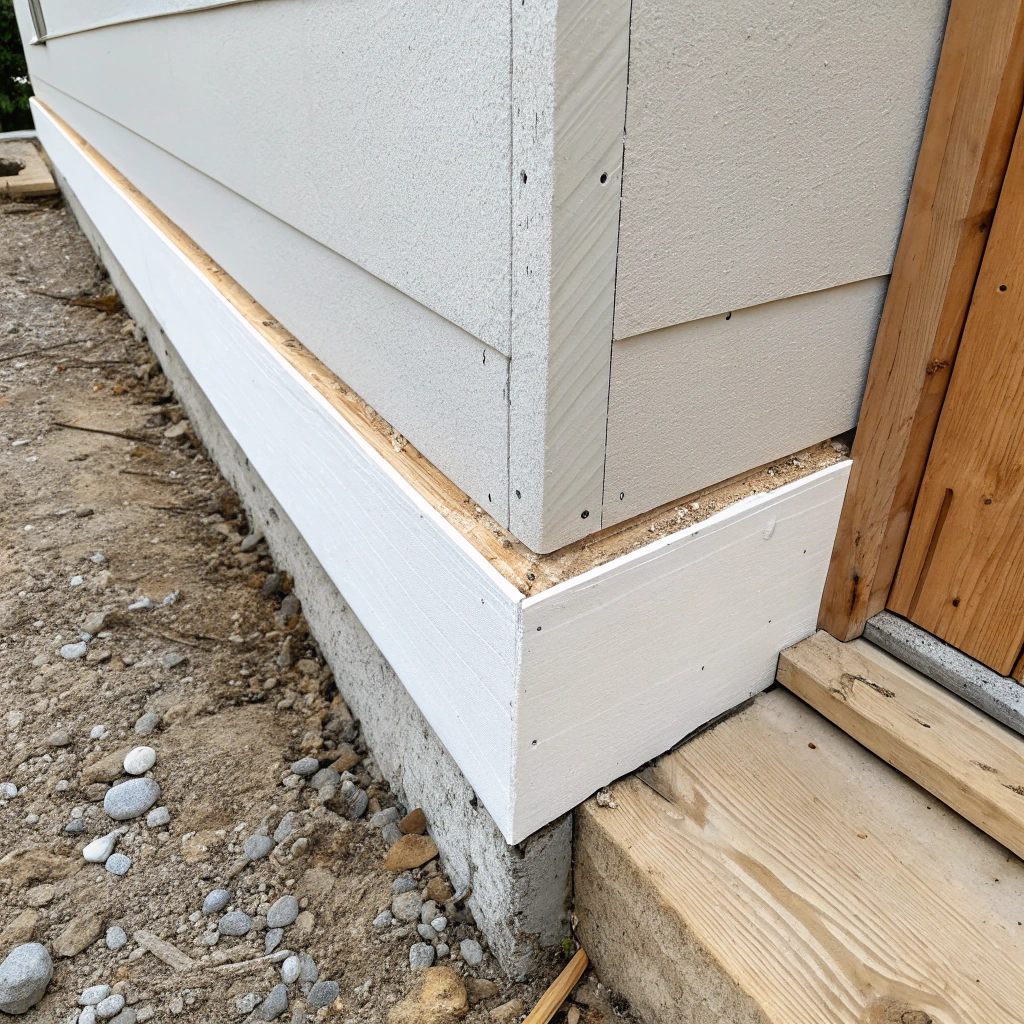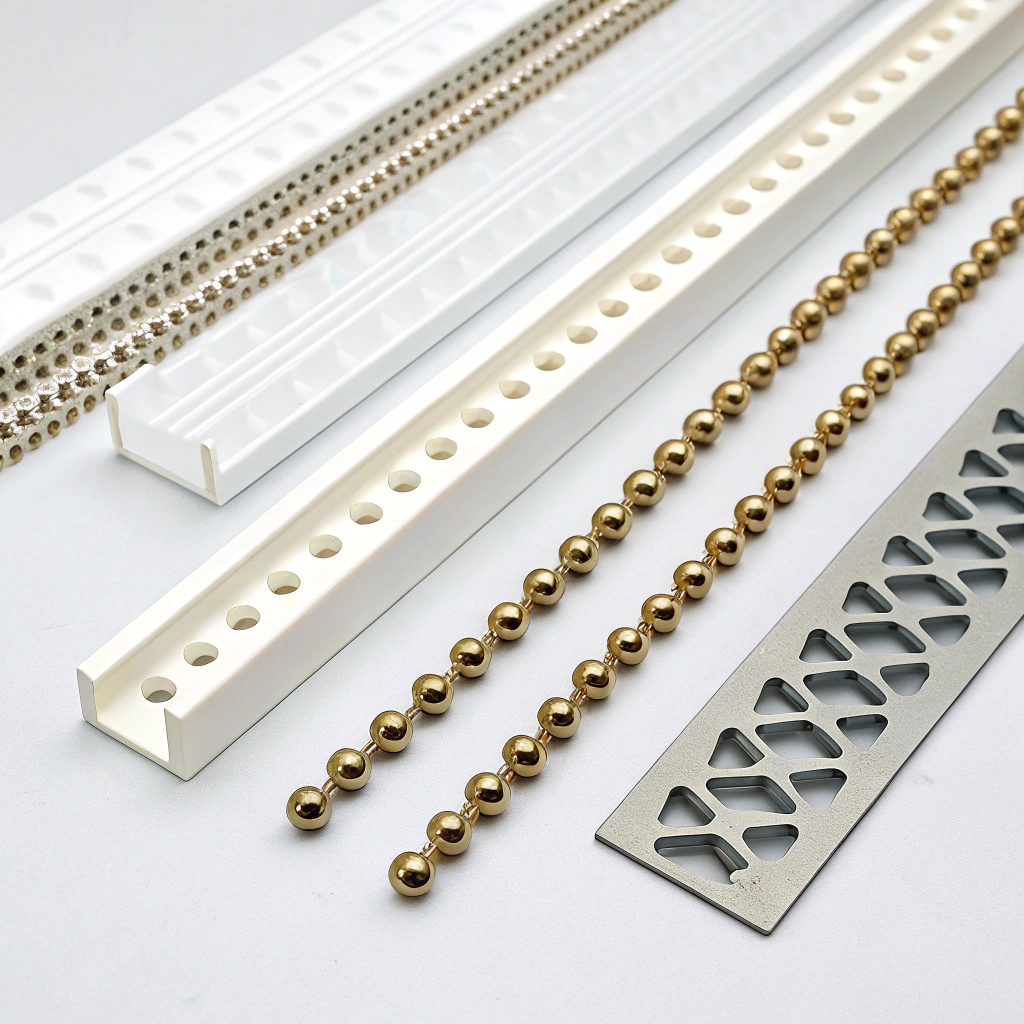Co je rohová lišta a proč je důležitá při instalaci sádrokartonových desek?

When I first started learning about drywall finishing, I kept running into the term “corner bead.” I didn’t really get why something so small was such a big deal—until I installed drywall without one.
Corner bead is a critical element in drywall installation. It strengthens, straightens, and smooths the edges where two drywall panels meet at an outside corner.
If you’ve ever seen a cracked or chipped wall corner, chances are the corner bead was missing—or poorly installed. Let me walk you through everything I’ve learned, step by step.
What is Corner Bead?
When two sheets of drywall meet at an outside corner, they form a 90-degree angle that’s fragile and hard to finish neatly. Even a small bump can ruin it.
Corner bead is a rigid strip, usually L-shaped, that is attached to these corners to create a strong, straight edge.

Corner bead solves two problems at once. It reinforces the drywall corner so it doesn’t crumble or crack, and it makes it easier to spread joint compound evenly over the surface. This gives a clean, crisp, professional look.
Common Types of Corner Bead
There are several types of corner beads available, and each one has its place depending on the wall structure and the expected wear.
1. Metal Corner Bead
Galvanized steel is common. It’s strong and ideal for areas with high foot traffic or furniture movement. But it dents easily and may rust if the coating gets scratched.
2. Paper-Faced Metal
These combine a metal core with paper flanges. The paper helps the joint compound stick better and reduces cracking. This is what most professionals use in homes.
3. Vinyl or PVC
Flexible and rustproof, vinyl beads are great for humid environments or curved surfaces. They also resist dents better than metal.
Zde je rychlé srovnání:
| Typ | Výhody | Nevýhody |
|---|---|---|
| Kov | Strong, clean edges | Can rust, dents easily |
| Paper-faced Metal | Easy to blend, fewer cracks | Needs careful application |
| Vinyl/PVC | Rustproof, flexible, safe to cut | May need extra fasteners |
What Materials Are Used for Corner Bead?
Installing the right material makes a huge difference. Not all beads are created equal. Each one responds differently to environmental factors and installation conditions.
Corner beads are commonly made from metal, paper-faced metal, or vinyl. Your choice should match the project’s needs for durability, flexibility, and finish quality.

A Closer Look at Materials
✅ Metal (Galvanized Steel)
- Common in commercial projects.
- Excellent for high-impact areas like hallways.
- Must be secured with nails or screws.
- Needs anti-rust coating in moist environments.
✅ Paper-Faced Metal
- Good for speed and finishing quality.
- Paper creates better adhesion with joint compound.
- Installed with only compound or spray adhesive.
✅ Vinyl
- Won’t corrode, safe to handle.
- Cuts easily with scissors.
- Often used on arches or rounded corners.
| Materiál | Kvalita povrchové úpravy | Flexibilita | Potřebné nástroje |
|---|---|---|---|
| Kov | Vysoká | Nízká | Snips, screws |
| Papír | Velmi vysoká | Střední | Knife, mud |
| Vinyl | Dobrý | Vysoká | Scissors, mud |
Vinyl corner beads are ideal for curved walls and wet environments.Pravda
Vinyl is flexible and rustproof, making it suitable for these situations.
Metal corner beads are always the best choice for all drywall projects.False
Metal is strong but not flexible or rustproof, so it's not suitable for every project.
How Do You Install Corner Bead?
It’s not just about picking the right material—you’ve got to install it correctly. I remember my first time doing this on a curved corner. Let’s just say… it wasn’t pretty.
To install corner bead, you measure, cut, fasten it to the corner, then apply joint compound over it until the transition is seamless.

My Step-by-Step Installation Process
Step 1: Measure and Cut
Use a tape measure to match the height of the wall corner. Then cut the bead:
- Use tin snips for metal.
- Use scissors or a utility knife for vinyl.
- Make sure the bead fits flush from top to bottom.
Step 2: Fasten the Bead
- Metal beads: Nail, screw, or staple it in place through the flange holes.
- Paper-faced: Attach with compound only, or use spray adhesive.
- Vinyl: Can be stapled or set into the compound.
Step 3: Apply Joint Compound
- Cover both flanges with mud.
- Feather out the edges using a wide knife.
- Let it dry, sand, and repeat until smooth.
Step 4: Prime and Paint
Finish it like any other drywall section. The bead should disappear beneath the paint.
Profesionální tipy
- Don’t overload the mud. Too much leads to sanding and shrinkage.
- Keep it clean. Wipe off excess before it dries.
- Always check for air bubbles under paper-faced beads.
Paper-faced corner beads can be installed using joint compound only, without fasteners.Pravda
The paper backing allows compound to hold it in place effectively.
All corner beads require nailing or screwing into place.False
Some types, like paper-faced, can be installed with compound only.
Why Is Corner Bead Important in Drywall?
You might think you can just mud the corners and call it a day. I thought the same—until a bump from a chair chipped the drywall.
Corner bead protects drywall edges from damage and ensures sharp, clean finishes.

The Role of Corner Bead
🔹 Durability
Corners are high-risk zones. Kids run into them. Movers brush against them. Without a hard edge, they crumble easily. The bead takes the hit instead.
🔹 Visual Appeal
Ever noticed how a perfectly sharp corner makes a room look more refined? That’s the bead at work. It creates the frame of the wall and adds symmetry.
🔹 Better Finishing
The bead also gives the compound something to grip. It helps distribute mud evenly and keeps it from cracking.
So, it’s not just protection. It’s precision.
Corner bead only improves the appearance of corners, but doesn't add structural protection.False
It also reinforces the drywall to prevent chips and damage.
Using corner bead leads to longer-lasting drywall edges in high-traffic areas.Pravda
Corner bead protects the vulnerable outside corners from wear and impact.
When Should You Use Corner Bead?
Sometimes people ask if corner bead is really necessary for every corner. My answer? If it’s an outside corner, then yes. Always.
Corner bead should be used on all outside drywall corners to strengthen and clean up the finish.
Ideální případy použití
- Standard corners: Metal or paper-faced beads are ideal.
- Curved walls: Vinyl beads bend and shape easily.
- Moist areas: Use rustproof vinyl instead of metal.
- Zóny s vysokým provozem: Go with metal for strength.
When Not to Use It
- Inside corners: Use joint tape and compound instead.
- Temporary walls: If the structure isn’t permanent, skip the bead.
Souhrnná tabulka
| Případ použití | Bead Type to Use |
|---|---|
| Standard corners | Metal or Paper |
| Curved walls | Vinyl |
| Wet environments | Vinyl |
| Low-impact areas | Jakýkoli |
Corner bead should be installed on all drywall corners, including inside corners.False
Inside corners use drywall tape and compound, not corner bead.
Vinyl corner bead is recommended for both curved walls and humid spaces.Pravda
Vinyl is flexible and rust-resistant, making it ideal for these areas.
Závěr
Corner bead is one of those little things that makes a big difference. It doesn’t just protect drywall—it makes every corner sharp, clean, and professional. Choose the right type, install it well, and your drywall corners will last for years.



